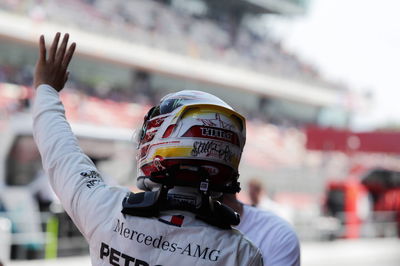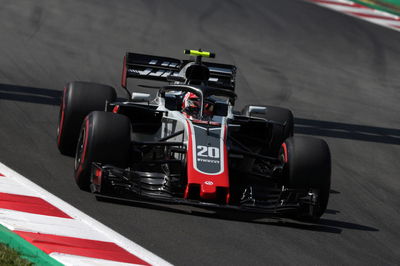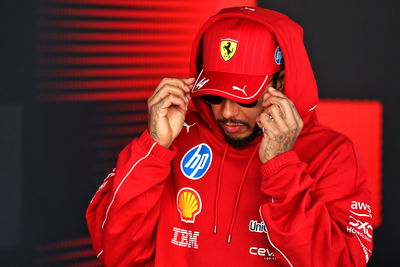F1 Qualifying Analysis: How the Q3 fight swung to Mercedes
The final battle for pole position in Formula 1 is often one of the most exciting and entertaining parts of the race weekend. Since being introduced in 2006, the three-stage qualifying format has only needed minor tweaks, with the disastrous attempt to introduce quickfire knockouts in 2016 proving the truth in the mantra “if it ain’t broke, don’t fix it”.
Seeing drivers go head-to-head on low fuel with the softest tyres in the fight for pole can be thrilling, with fine margins splitting the front-runners for four of the five Q3 sessions so far this season.

The final battle for pole position in Formula 1 is often one of the most exciting and entertaining parts of the race weekend. Since being introduced in 2006, the three-stage qualifying format has only needed minor tweaks, with the disastrous attempt to introduce quickfire knockouts in 2016 proving the truth in the mantra “if it ain’t broke, don’t fix it”.
Seeing drivers go head-to-head on low fuel with the softest tyres in the fight for pole can be thrilling, with fine margins splitting the front-runners for four of the five Q3 sessions so far this season.
Lewis Hamilton’s march to pole in Australia by six-tenths of a second aside, the decisive gap has been no greater than 0.179 seconds. In Spain on Saturday, the gap was just four-hundredths of a second.
But there was an added element in the scrap at the front this time around. Tyre strategy has been more of an element in Q2 than Q3 in recent times as the front-runners try to get through on a harder compound tyre in a bid to gain a strategic advantage for the start of the race, allowing them to run longer before stopping. For Q3, though? It’s been straightforward: the softest tyre is the way to go.
Yet in the fight for pole position at the Circuit de Barcelona-Catalunya, we saw Mercedes, Ferrari and Red Bull try out a mix of strategies, resulting in one of the most exciting and least predictable Q3 finales in recent memory.
A number of drivers had reported struggles with their tyres through practice of Friday, resulting in numerous off-track moments that also left it difficult to know what the optimum compound would be for the race. Pirelli was debuting its modified tyres in Spain, reducing the tread by 0.4 mm in order to prevent overheating on the resurfaced track. The same move has been made for Paul Ricard and Silverstone later in the year.
Sebastian Vettel reported that his tyres felt “quite different” after FP2, with paddock gossip suggesting it would play into Mercedes’ hands a little more. The Silver Arrows have struggled at points this season with its tyres, needing to find exactly the right window to hit the ‘sweet spot’ - qualifying in China being a perfect example of how things could go wrong.
Cool conditions hit the track ahead of qualifying, further complicating the tyre picture. The front-running teams were all able to make it through Q2 on the Soft tyre, seeming to save the Supersoft for Q3, and put in some rapid times in the process. Vettel finished fastest in Q2 with a best lap of 1:16.802.
But the bigger indicator that the Soft may outrightly be the better tyre came from drivers who did not feature in the fight for pole. Kevin Magnussen, Romain Grosjean and Carlos Sainz Jr. all made it through to Q3 on Softs, meaning Fernando Alonso will be the only driver to start inside the top 10 on Supersofts tomorrow. Typically, the teams would not take such a risk; alas, they were able to make some decent lap time gains by taking a step back from Supersofts to Softs for their final runs in Q2.
All of the front-runners entered Q3 expecting to treat it like a regular session, fitting Supersoft tyres for their first runs. Lewis Hamilton quickly lit up the timesheets with a time of 1:16.491, setting the benchmark pretty high for the Ferraris that followed.
Yet neither Vettel nor Kimi Raikkonen, both of whom had been expected to make a stride forward on Saturday, were able to respond. Both had messy laps on the Supersofts, Raikkonen’s being so much so he was given the call to pit, only to request that he finish the lap to ensure he got a time on the board.
It was instead the Red Bull duo of Max Verstappen and Daniel Ricciardo who emerged to put up the closest challenge, going P2 and P3 respectively with Valtteri Bottas following in P4. Vettel was fifth, while Raikkonen was a lowly seventh. The Supersofts just weren’t working as expected for Ferrari and Red Bull.
“I didn’t get a great feeling on that tyre, on that set,” Vettel explained. "I asked to go back and I think it was the right call, we were very quick. I think the tyres this weekend are different because obviously we had the change, it’s for everyone, but I think they are a bit harder. For me it was pretty straightforward, because I was happier with the car with that tyre.”
Ricciardo was the first to venture out on-track on Softs, with Raikkonen and Vettel following suit a minute or so later. Mercedes opted to back itself, keeping Hamilton and Bottas on Supersofts instead of covering against the possibility of its rivals finding an advantage on the harder tyre.
It proved to be a case of ‘close but no cigar’, largely thanks to another mighty lap from Hamilton to close out the session. Finding an additional three-tenths of a second, Hamilton was flirting even with the 1:15s, with his final lap dialling in at 1:16.173. It seemed to be an unbeatable lap.
Bottas came within half a tenth of nicking pole away, while Vettel - now more comfortable on the Softs - was a tenth shy from extending his streak. While Ricciardo improved on his Soft run, it was only by 0.04 seconds.
There was no hard and fast rule when it came to strategy in Q3, but it proved just how difficult it is to get a real handle on the 2018 tyres.
“It’s a constant learning process,” pole-sitter Hamilton said. “These tyres seem to have the smallest working window. Whether you give us more rubber or less rubber, they appear to be a lot harder than last year.
“I know they went softer, but I think it’s more so because the working range is far narrower than it was last year, and so you give it everything on an out-lap and you still don't have your tyres in the window.
“This year they’re just too hard. That’s why everyone struggles. I don’t understand why they worked in Australia and haven’t worked ever since and today we have them working.
“I was saying to Valtteri that when we get to Monaco, we’re going to just be driving around on cold tyres because it’s not very easy to get your temperatures up there.”
Fernando Alonso - who also gained time on the Softs in Q3 - was more impressed by Pirelli’s tyre offering for this season, believing it is even a way to aid the predictability of the sport he panned on Thursday.
“Formula 1 is predictable, Formula 1 is about the constructors’ championship. There are different teams in different rows of the grid, but there is not much more that the driver can do,” Alonso said.
“That’s the sad thing. That’s why the tyre could be a factor. The tyres are very good this year. The tyres are performing better than ever. Maybe the tyre is in a way a solution…”
Mercedes certainly managed to get on top of its tyres in the best way on Saturday - but is there anything to the theory the tread changes were made to favour the team?
"Rubbish, rubbish," team boss Toto Wolff said. "All teams had blistering, very heavy blistering, at the test in Barcelona. Red Bull, Ferrari, ourselves. McLaren I think I’ve seen also. And the tyres wouldn’t have lasted in the race. The ambient, the track temperature was arctic. For that reason, Pirelli changed the thickness on the tyres to prevent the blistering. It’s been successful in preventing the blistering because we haven’t seen any on any car today.
"I don’t know where suddenly this rumour comes out that we’ve been influencing Pirelli, and the FIA, to change the tyres. I have never seen anything working like that. Why should they do it?
"When we haven’t performed well in the past, we have taken ourselves by the nose, and have looked for performance to be found on our car, and not go the default mode, turn around, and say 'what are the others doing that is wrong?'."
Nothing like a good conspiracy theory to keep the F1 paddock talking, is there?











